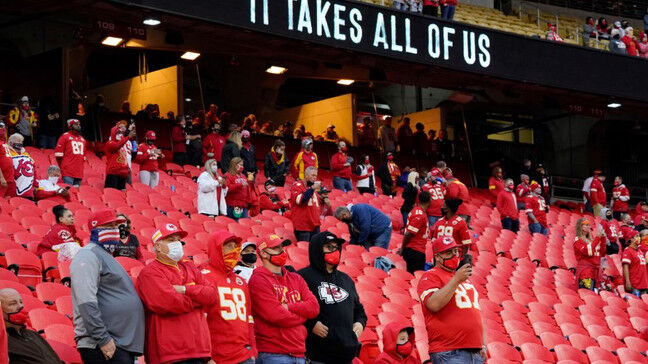Bursting Bubbles: Professional Sports During the Pandemic
Courtesy of The Associated Press
Bursting Bubbles: Professional Sports During the Pandemic
September 16, 2020
The old cliché that “records are meant to be broken” can easily be applied to the short term bubble format of major sports leagues.
Bubbles are meant to be bursted.
The amazement of the crowd when an athlete makes a tremendous play or the booing when the referee makes a bad call are sounds that we are used to hearing at sporting events. We love to feel the energy or momentum changes in a game if a late score is tallied or if there’s a massive mistake that hurts the team’s chances of winning. We plan our weekends around football games in the fall, and the same goes for basketball and hockey games in the winter. In the summer, we attend baseball games to relax and enjoy America’s favorite pastime.
Some sense of normalcy was achieved by the National Football League when it began the 2020 season Thursday night when the defending Super Bowl Champion Kansas City Chiefs defeated the Houston Texans, 34-21. This was a beautiful sight to see; I felt as though I could rise and fall with the crowd’s momentum and seesaw of emotions. Even NBC’s play-by-play announcer, Al Michaels, had to clarify that artificial crowd noise was not being used, and the loud cheering was from the minuscule 17,000 in attendance.
Many other leagues and sports, however, have chosen to have no fans and have locked their athletes, staff and trainers in bubbles. These bubbles are where we have seen virtual fans at NBA playoff games, heard artificial crowd noises during NHL playoff games and witnessed cutouts of people in the stands of MLB games. By the way, these people pay to see themselves get plunked by another crushed homerun.
This bubble does not have to be this strict or this prolonged. The NBA has set up shop in Walt Disney World, where the original 22 teams were split into hotels. The games and practices are held at the ESPN Worldwide Sports Complex, which hosts three courts for games and another seven for practices, according to sportsrush.com. The only people that can be there are coaches, staff, select reporters, commentators and of course, the virtual fans. It looks incredibly dumb on television, and it looks like they are surrendering to a virus that is steadily trending downwards by the great efforts of the American people.
The National Hockey League executed a similar venture in which all the Eastern Conference teams were staged in Toronto, Ontario, while all of the Western conference teams were placed in Edmonton, Alberta. The Philadelphia Flyers made it to Game 7 of the second round, but besides the three overtime game winners, the games felt awkward when the artificial crowd noise of fans cheering or booing would come in late, or simply sounded wrong all together. Playoff hockey games feed off the fans energy; the level of intensity is just not the same from the fan’s perspective.
The positive aspect for both leagues is that there are seldom positive cases, and no stoppages or postponements have been necessary because of the virus. The only time players have been held out have been for violations of NBA bubble protocols, such as when sixth man for the Los Angeles Clippers Lou Williams visited a gentleman’s club and was mandated to quarantine for 10 days.
Major League Baseball has written a different story; they have not had any fans, but they have experienced multiple series of postponements, including the Phillies having to play the Miami Marlins seven times in five days this past week. The Marlins irresponsibly played a game against the Phillies in the first week of the season, despite knowing that they had multiple players with positive test results. The reason for the regionalized schedule and teams being able to play at their home fields is because, according to CBS Sports, the face of the MLB, Mike Trout, said it would be “pretty crazy” to be locked up in hotels and not see their families for months. Baseball’s cut outs and tarps placed on the seats is starting to get old; baseball relies on the family friendly atmosphere to promote its product.
After reading all of this, what is the solution? It’s easy. Allow fans back into the games with safety precautions in place. A family can sit together, and others can close off a seat or two in between the fans, with masks on. People take risks everyday; we have shopped in stores with plenty of strangers or worked closely beside others during the worst of the pandemic. I am certain that many people, including myself, would take the small risk of attending a sporting event, in the same way we attend mass and college classes with masks and social distancing measures. Implementing these procedures will allow us to take one step closer to defeating this virus and returning to life as we knew it.










